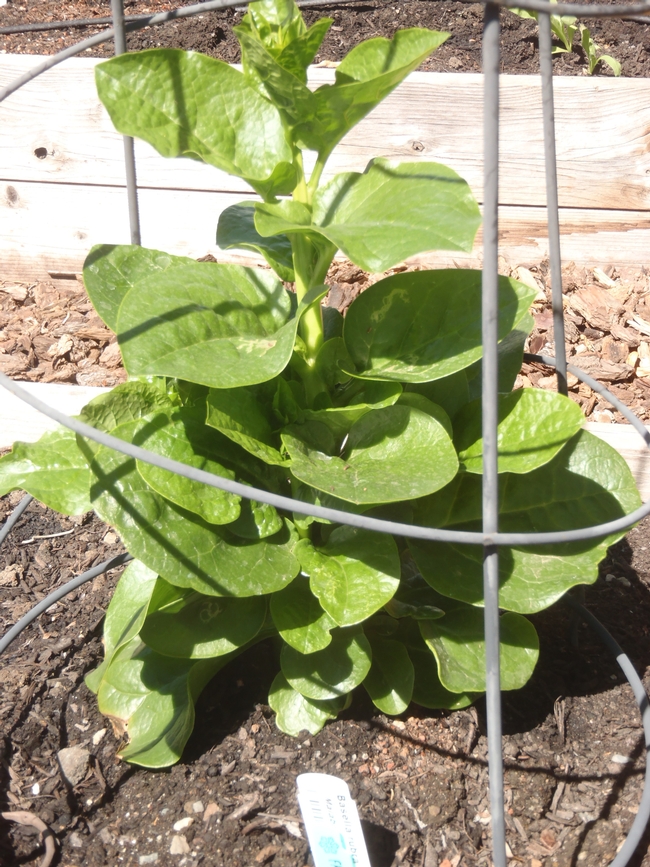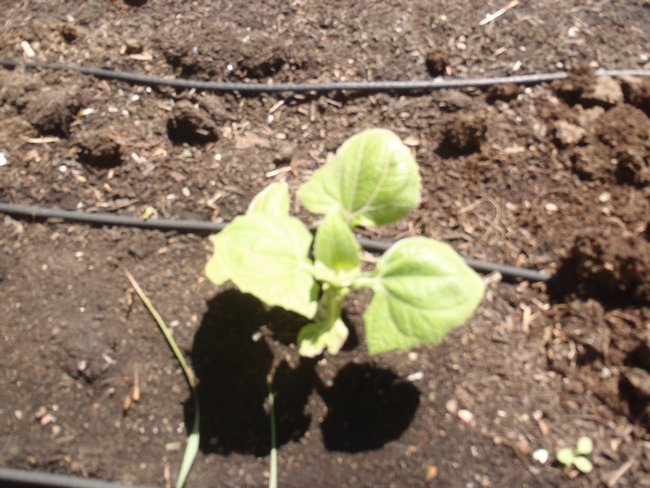Exotic Perennial Vegetables of the Month: Yacon and Malabar Spinach
When gardeners speak of “perennial vegetables,” the edible plants that often come to mind include asparagus, rhubarb, and artichoke. The purpose of this article is to introduce you to other rare and/or unusual perennial vegetables which may be worth cultivating in your own backyard garden.
My quest for rare and unusual perennial vegetables led me to a plant sale recently held at the Occidental Arts & Ecology Center in Occidental, California (see www.oaec.org for more information). Although I purchased a number of perennial vegetables at the sale, most of which I have no experience growing, this article will feature two of those plants, which seem to be thriving thus far in my Solano County backyard garden. I will report back on other weird and wonderful perennial vegetables in the coming months, depending on how well they fare.
I had been searching for yacon (Polymnia sonchifolia), also known as Bolivian Sunroot, for quite some time, and was thrilled to have found it at the OAEC plant sale. Yacon is considered one of the “Lost Crops of the Incas.” Yacon is a relative of the sunflower and and native to the high Andes. Although my yacon plant is currently 5 inches tall, the literature I have read indicates that my yacon plant should reach 5-feet tall at maturity. To harvest yacon, the tubers are dug up in the autumn (so I have another a year to wait). Yacon is a versatile plant, as it can be eaten raw like fruit, or can be stir-fried, roasted, baked or made into pies and chips. Some cultures use the leaves of the yacon plant with which to wrap their food. Although I have never tasted yacon as it is not readily available in the markets that I shop at, I have read that yacon tastes like jicama, only better. Another description that I found, said that yacon tastes like a cross between celery and a Granny Smith apple. Yacon is best grown in full sun and in well-drained, fertile soil.
In recent years, yacon has grown in popularity, both in gardening literature and in nurseries specializing in rare plants. This may be due to the fact that yacon is an up and coming “super food,” as food companies are developing yacon into various products such as yacon syrup, which is a low-calorie sugar substitute appealing to both diabetics and people on diets.
Although I debated whether to buy malabar spinach (Basella rubra) at the OAEC plant sale, I gave in, as I knew malabar spinach to be a staple for those interested in permaculture/creating an edible food forest in their backyards. It is not actually spinach, but has the flavor of spinach, and can be substituted in recipes which call for spinach (note that malabar spinach is fleshy and mucilaginous, and is best consumed cooked and not raw). Under the right conditions (e.g., full sun, and fertile, well-drained soil), malabar spinach which is a vine requiring trellising, can reach 8-10 feet in length. Because malabar spinach is so prolific, I have read that one vine is sufficient to feed a family of 4. Malabar spinach is frost tender and may need to be dug up and brought indoors during the winter.
I will report on other unusual perennials growing in my backyard in the coming months, so stay tuned for updates.

Malabar spinach. (photos by Betty Homer)

Yacon


Posted by Launa Herrmann on September 11, 2013 at 8:46 AM